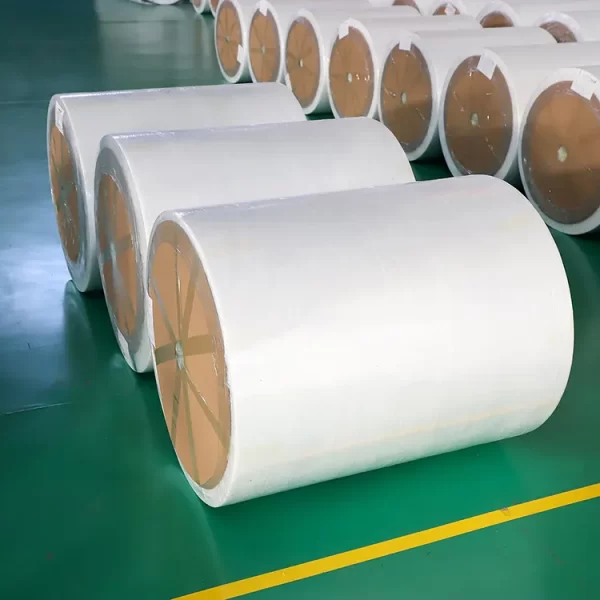What Are Non-woven Fabrics Best Used For?
Nonwoven fabrics are an omnipresent yet often overlooked element of our everyday life. These unique textiles, manufactured directly from fibers, bypass traditional weaving or knitting methods, endowing them with an impressive array of properties that can be tailored to a wide range of applications. This comprehensive analysis delves into the primary uses of nonwoven fabrics and discusses the reasons behind their preferred application in each context.
Nonwoven Fabrics: Understanding the Basics
A clear comprehension of what nonwoven fabrics are sets the groundwork for our exploration. Nonwoven fabrics are versatile materials created directly from fibers, bypassing the traditional route of converting fibers to yarn and then weaving or knitting them into fabrics. The fibers are bonded using a variety of methods, including heat, chemicals, or mechanical processes, resulting in a fabric with unique properties.
The direct-from-fiber approach of nonwoven fabrics allows for customization of specific properties, making them suitable for a wide array of applications. These range from medical products to geotextiles, hygiene products, and many more. With this understanding, let’s delve into the main areas where nonwoven fabrics shine.
Medical Applications: Nonwovens at the Forefront of Health and Hygiene
Nonwoven fabrics have proved their mettle in the medical and healthcare industry due to their superb protective capabilities, hygienic properties, and comfort. Let’s delve deeper into their application:
Surgical Gowns and Drapes: In an environment where the risk of contamination is high, nonwoven fabrics provide a shield against various fluids and particles. Their liquid repellency and barrier properties make them the material of choice for surgical gowns and drapes.
Face Masks: The recent COVID-19 pandemic has highlighted the importance of nonwoven fabrics, specifically meltblown polypropylene, in face masks. Their superior filtration capabilities prevent the transmission of airborne particles, playing a crucial role in curbing the spread of the virus.
Wound Dressings: Nonwoven fabrics offer high absorbency and breathability, which are pivotal for wound healing. In addition, they are gentle on the skin, offering comfort to the wearer.
Disposable Caps and Shoe Covers: Nonwoven fabrics find their use in disposable caps and shoe covers due to their ability to act as an effective barrier against microorganisms.
Geotextiles: Reinforcing the Ground Beneath Us
Geotextiles, typically made from nonwoven polyester or polypropylene, have become indispensable in civil engineering applications. Their toughness, high puncture resistance, durability, and excellent water permeability make them ideal for various tasks such as soil stabilization, erosion control, and drainage in road construction, embankments, and landfills. They also find usage in landscape gardening, providing an effective solution for weed control while allowing soil hydration.
Automotive Applications: A Silent Revolution
Nonwoven fabrics have silently infiltrated the automotive industry, enhancing comfort, safety, aesthetics, and fuel efficiency.
Interior Components: Nonwovens are used in the production of headliners, seat covers, trunk liners, and carpeting, offering a blend of aesthetics, comfort, and durability.
Insulation: Nonwovens are excellent insulators against heat and sound, helping to create a quiet and comfortable driving environment.
Air and Oil Filters: Nonwovens’ superior filtration capabilities find use in the manufacture of air and oil filters, critical to a vehicle’s performance and longevity.
Hygiene Products: Ensuring Personal Comfort and Care
Nonwoven fabrics have significantly impacted the personal hygiene sector due to their absorbency, softness, and breathability.
Baby Diapers and Adult Incontinence Products: Nonwoven fabrics are the core material in these products, absorbing and locking in liquid quickly to ensure the user remains dry.
Feminine Hygiene Products: Nonwoven materials, due to their superior comfort and breathability, are commonly used in sanitary napkins and panty liners. Many of these fabrics are also treated with antibacterial agents to enhance safety.
Wipes: From baby wipes to disinfecting wipes, nonwoven fabrics, with their excellent liquid retention and release properties, are the material of choice.
Home Furnishings: Crafting Comfort and Style
Nonwoven fabrics, with their design flexibility, durability, and cost-effectiveness, have transformed the home furnishing sector.
Carpet Backing and Upholstery Padding: Nonwoven fabrics provide structural stability and comfort to carpets and upholstered furniture, ensuring their longevity and aesthetic appeal.
Window Shades and Wall Coverings: Nonwoven fabrics are extensively used in crafting window treatments and wall coverings due to their design versatility and light control capabilities.
Mattress Components: From mattress ticking to spring insulators and flame retardant barriers, nonwovens offer a plethora of advantages.
Packaging: Protecting Goods and Enhancing User Experience
Nonwoven fabrics play a significant role in the packaging industry. From protective packaging for fragile items to shopping bags, nonwovens offer a combination of strength, flexibility, and aesthetics.
Agriculture: Enhancing Crop Yield and Quality
Nonwoven fabrics, particularly spunbond fabrics, are used in agriculture for crop protection against harsh weather and pests. They allow for air and water permeability, promoting healthy plant growth.
Conclusion
The versatility of nonwoven fabrics, coupled with their customizable properties, makes them a sought-after material in various industries. The ever-evolving technological advances promise a future where the applications of nonwoven fabrics will only grow, further cementing their integral role in our lives. They encapsulate the essence of modern material engineering – superior functionality, adaptability, and sustainability. The silent work of these fabrics indeed contributes significantly to the fabric of our lives.
Please visit our website for more product details https://medposnonwoven.com/product-category/non-woven-fabrics/

